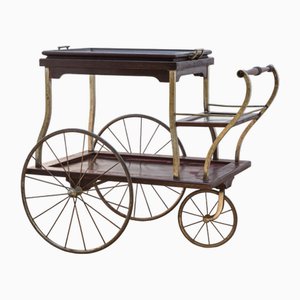
Architect, designer, and theorist Adolf Loos is among the most influential pioneers of the modern movement and played an active role in the intellectual life of fin de siècle Vienna. Though the number of designs he realized in his lifetime is limited, his many writings and lectures railing against extraneous ornamentation—especially his treatise Ornament and Crime (1910/13)—would impact the course of design history through the generations that followed.
Loos was born in 1870 in Moravia in the Austro-Hungarian Empire, what is now the city of Brno in the Czech Republic. His father was a stonemason, and his mother carried on the business when Loos’s father passed away unexpectedly. The younger Loos went on to study at technical schools, but never graduated.
Between 1893 and 1896, in his mid-20s, Loos adventured to the United States, where he was greatly impressed by the architecture of The Chicago School, including the buildings of Louis Sullivan (who also influenced Frank Lloyd Wright). He went back to Europe in 1896, armed with ideas about the modern era requiring a more minimal, rational aesthetic. Settling in Vienna—one of the world’s most vibrant intellectual centers at the time—Loos found his ideas about decoration at odds with the prevailing tastes, most especially as expressed in the work of the Vienna Secessionists, like Gustav Klimt, Joseph Maria Olbrich, Koloman Moser, and Josef Hoffmann. He was not shy about publicly decrying the expressionist and “decadent” approaches of his contemporaries. For Loos, the form and aesthetics of a design must come from the innate qualities of the materials used—nothing more. (Historians are much kinder to Hoffmann’s geometric ornamentation, in particular, and see it as a direct precursor to modernism.)
Around the turn of the 20th century, Loos worked for legendary Austrian architect Otto Wagner—another early pioneer of modernism—and celebrated the designs of Scottish talents like Charles Rennie Mackintosh. Loos’ design for the Steiner House in Vienna (1910) was one of the first private houses constructed in reinforced concrete and featured strong, pure geometry.
Loos designed few objects, but his famous bentwood and cane Café Museum Chair (1899) remains in production to this day with Thonet and Gebrüder Thonet Vienna. He died in 1933, just as the next generation under his influence—the likes of Le Corbusier, Walter Gropius, Ludwig Mies van der Rohe, and more—were themselves changing the course of design history.

